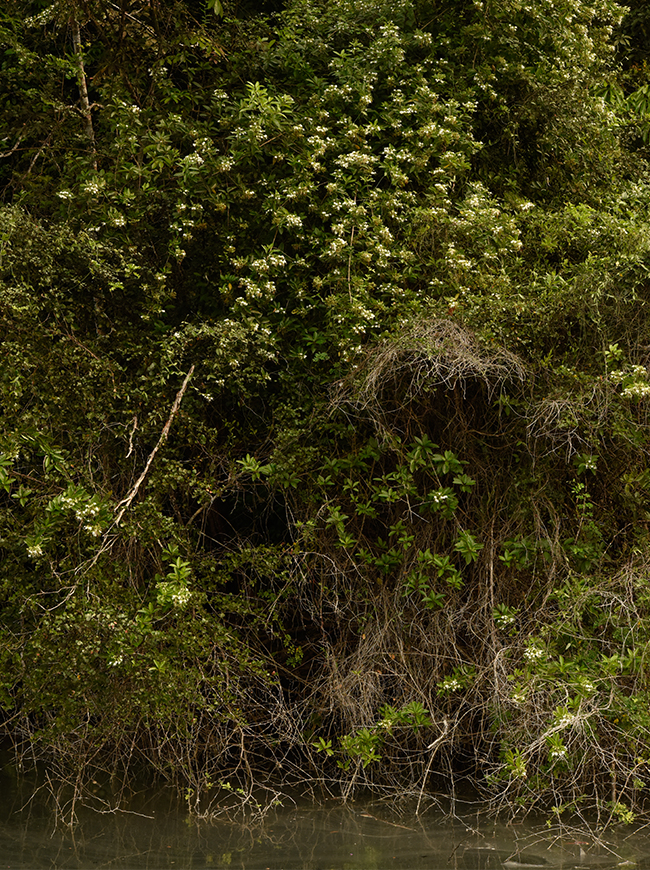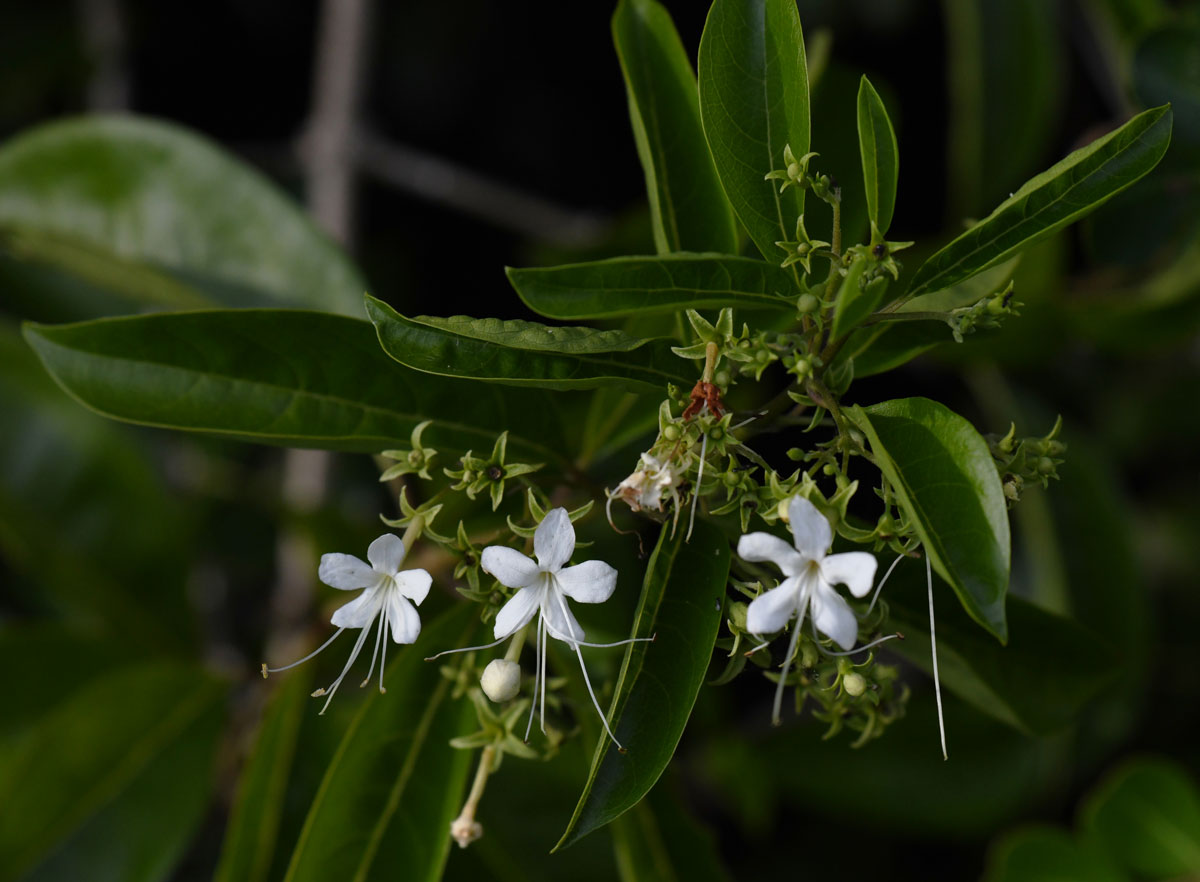Over the last several years we have been studying the plants used to flavor cacao drink of the Aztec and the Maya. Today you would study cocoa and chocolate, but the technical botanical word is cacao (Theobroma cacao, though a second kind of cacao, Theobroma bicolor, pataxte, is also potentially used).
We are also studying Theobroma angustifolium, which was common throughout Chiapas (Mexico) and adjacent Costa Sur of Guatemala a hundred years ago (but of which only a handful of trees remain today since it is not as productive as modern varieties of Theobroma cacao). No botanist or archaeologist has clearly stated whether Theobroma angustifolium was present in Guatemala before the conquest or was brought from Costa Rica to Guatemala and Chiapas, Mexico immediately after the conquest.
We have a list of over a dozen plants used to flavor the cocoa, chocolate (cacao) beverages of the Aztec and Maya for thousands of years. Many of these spices are listed by Sophie Coe and Michael Coe in their excellent book on cacao of the Aztec and Maya. A few are listed in other sources (we have abundant bibliographies on www.maya-art-books.org). But some of the spices are rarely listed in popular or even scholarly books on the Maya or Aztec.
Clerodendrum ligustrinum is a potential spice for cacao beverages which is mentioned by Jean-Michel Hoppan, in his 2011 article about potential translations of glyphs associated with cacao in PSS (Primary Standard Sequence hieroglyphs) on Classic Maya artifacts, especially ceramic vases, bowls, and plates.
Itzimte plant is common in Mexico but very rare in Guatemala
There are many sources for lists of herbs, spices, and flavorings. Clerodendrum ligustrinum is already in these lists. But Clerodendrum ligustrinum is not often in lists of flavorings specifically for prehispanic cacao. So we began doing research after noticing this plant in botanical publications. We got even more interested when we read the article on Mayan hieroglyphs by epigrapher Jean-Michel Hoppan.
In five years we have not yet found an agronomist or botanist in Guatemala who is familiar with Clerodendrum ligustrinum. We are the same: we have never found it in all these years. But now that I did more research, we have finally located two places in Guatemala to find it: around the aldea or comunidad conveniently named Itzimte (El Peten) and along the Rio San Pedro Martyr (also in El Peten). So the next time we can send the plant scouts to these areas, we should be able to find this bush in both locations. And eventually we can find it blooming.
Ironic that the plant is available in Mexico: Chiapas, Tabasco, Campeche, Quintana Roo, and Yucatan (Flor de la Peninsula de Yucatan, web site). And if I remember correctly, also outside the Maya areas as well. Yet in five years we have not found it in Peten!
Itzimte in the north of La Libertad, Petén, is named for this plant
Itzimte, the ruins named after this plant, are is located 9 km southwest of El Zotz station, decades ago that is, of the then Gum Development Company, between Flores and Laguna Perdida. It called Itzimte-Sacluk (Sac-luk = mud or sludge and Itzimte = white and yellow flower with taste and smell anise, used to flavor drinks).
Itzimté ( Localidad )
Departamento: Petén, Municipio: La Libertad
Latitud: 16.9667 Longitud: -90.1833
Itzimte = flor amarilla con sabor y olor a anís, utilizado para sazonar bebidas). I would need to see whether this is based on Maler (1908) or Morley (1930's). Since Maler confused the white flower of itzimte and the yellow flower of pericon, much information copied-and-pasted thus repeating confused misinformation.
There are several reports on the ruins of Itzimte, especially by H. Mejia. We will try to add these to our bibliography.
Itzimte (or Itzimte-Sacluk) is the largest settlement in the region, is located at coordinates 16 ° 55 '32 " N and 90 ° 10 '17 "W. The courtyards are scattered through an area near the 0.5 square kilometers, where there are raised sections by huge foundations, wealthy natural hills and low section that is between them other residential groups.
We sent two students to ask permission to search for the plant in 2014, but they could not get entry even close, even though they had a guide from central Peten.
In February or March 2016 a long-time friend in El Peten area came with us to La Libertad and we were introduced to the owner of the finca physically adjacent to the finca where the ruins are located. No one on this adjacent finca recognized the plant (we have photos from the Internet to show people what we are looking for). But all the people on the adjacent finca were very hospitable.
Almost one year later two different plant scouts each separately found Clerodendrum ligustrinum in their areas within a week of each other. So after years, literally years of research, we found two areas filled with Itsimte. We hope botany students can work together with the owners of properties around the physical location named itsimte to find, document, and record Clerodendrum ligustrinum in that swampy area also.
Bibliography on the Maya archaeology ruins of Itzimte, Peten
- 1908
- Explorations on the Upper Usumatsintla and Adjacent Regions: Altar de Sacrificios, Seibal,
Itzimte-Sacluk, Cancuen. Memoirs of the Peabody Museum of Archaeology and Ethnology 4
(1). Harvard University, Cambridge.
Unfortunately Teobert Maler got itzmite totally confused with the common herb pericon.
- 2003
- El área de Itzimte en el norte de La Libertad, Petén. En Reporte 17, Atlas Arqueológico de Guatemala, Instituto de Antropología e Historia, Guatemala. 36-51 pages.
- 1938
- The Inscriptions of Peten. Carnegie Institution, Pub.437. Washington, D.C. (5 volumes).
- 1974
- Flora of Guatemala. Fieldiana: Botany, Vol. 24, Part X, Numbers 3 and 4. Field Museum of Natural History, 1970-1973.
Itzimte, La Libertad, El Peten, Guatemala, Central America
Itzimte = aldea or comunidad
La Libertad = municipio
El Peten = departamento
Places near Itzimte (www.tageo.com):
El Bucut, Finca el Sos, Finca Monte Limar, Finca la Tinta, Finca Santa Rita, La Libertad (a large town on the main highway from San Benito and Santa Elena to Sayaxche), Laguna Guacamayo, Laguneta el Sos, Monte Maria, Ojo de Agua (generic for any spring, of water), Polol, Sacpuy.
Finca El Sos is near Itzimte. Laguneta El Sos is further NE from Finca El Sos. On the map of Mejia (2003), Itzimte on the south side of a stream (with no name on the map) which is north of El Xux. El Xux is 1.7 km east of Itzimte In the description).
We have given up trying to find itzimte in the La Libertad area until we have funding which would allow having a staff to patiently visit the owners of the fincas in this area so we could request access.
Clerodendrum ligustrinum, Itsimte’ along river banks
During late March 2016, the manager of the Las Guacamayas Biological Station, send us photos of Itsimte’ which he found along the Rio San Pedro. One day later we learned that Julian, of Hotel Posada El Caribe, had found Itsimte along the Arroyo Petexbatun (roughly 100 km from Rio San Pedro).
I immediately rented a 4WD double-cabin pickup truck, and we drove first to Paso Caballos to study the plant there. Then we drove to Sayaxche to study Clerodendrum ligustrinum there.
  |
Ironic, we have been searching 5 years. And where was the plant found? Directly in front of the hotel where we have been staying once or twice a year for over eight years! Hotel Ecologico Posada El Caribe.
And for the Rio San Pedro, the flower was everywhere within a few meters of the Las Guacamayas Biological Station (where we have been staying once or twice a year for at least five years)!
Altogether we found thousands and thousands of plants, all in full flower. Probably over a million flowers to study! We will be issuing FLAAR Reports on this interesting plant.
We thank Jeovany Tut Rodriguez, Las Guacamayas Biological Station, and Julian Mariona, of the family owned and operated Hotel Ecologico Posada Caribe, for having located this flowering bush of such historical interest.
There is also the ruins of Itzimte-Bolonchen, in Campeche, Mexico
It would be interesting to know if there are lots of Itzimte bushes near Bolonchen, in Campeche, Mexico.
Do not confuse Itzimte with Iximche.
Ichimche is near Tecpan, in Highland Guatemala. It is a Post Classic Maya site. Itzimte is in the savanna area of El Peten, mostly Classic period.
Yes, “te” and “che” both mean “tree” (or in the case of Itzimte, bush, since it is not tree sized). Petén is primarily derivative of Yucatec Ytzá Maya languages (since all the original Mayan languages were exterminated by the brutal Spanish slaughter of local people). Ichimche is in a Highland Guatemalan language. Yucatec, Ytza, and Lacandon Maya are Lowland Mayan languages.
However we are interested in the plants, not in nearby ruins. But it is interesting how many Mayan place names are named after trees. Theobroma bicolor (either pataxte or balamte) has four places with the name of this tree as an aldea, river or another location in Guatemala.
Bibliography on PSS which clearly mentions Clerodendrum ligustrinum
- 2011
- Maestros del cacao: los mayas. Ouvrage de vulgarisation (article dans une revue d’art mexicaine : Artes de México, vol.103 ”CHOC.. 2011, pp. 29-35.
Available in English, Spanish, and French, all conveniently in the same PDF, which is a hospitable free download on:
https://halshs.archives-ouvertes.fr/halshs-00681580/document
We are preparing a complete botanical bibliography on Clerodendrum ligustrinum. This will be a separate FLAAR Report in our bibliography series. But as a starter:
- 1974
- Acanthaceae. In: P. C. Standley, L. O. Williams & D. N. Gibson (eds.), Flora of Guatemala. Fieldiana, Bot. 24(10/4): 328–462.
Photograph added April 25, 2024
Previously updated March 8, 2018, April 6,
2016;
before that, updated Feb. 13, 2015.
First posted September 2014
































